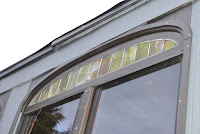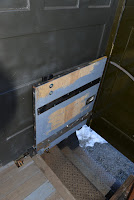 |
| Coach 213 platform "B" |
Now it is coach 213's turn: it is being completely rehabilitated, but unlike the 218 this work is being performed in phases so the car may remain in service during peak periods. With support from King County 4Culture's Heritage Capital program, major work has already been performed.
 | |
| A renewed clerestory window |
 |
| Upper window sashes after re-installation |
 |
| New platform trap |
 |
| New door and windows |
Car body siding has been addressed too. Extensive reworking of the cladding is sealing it from the weather and preparing it for the final color coats. And the next step will be rehabilitating the roof deck and re-applying a canvas roof. Exciting days are ahead for coach 213!
 |
| 213 with reworked cladding appearing in gray primer |

No comments:
Post a Comment